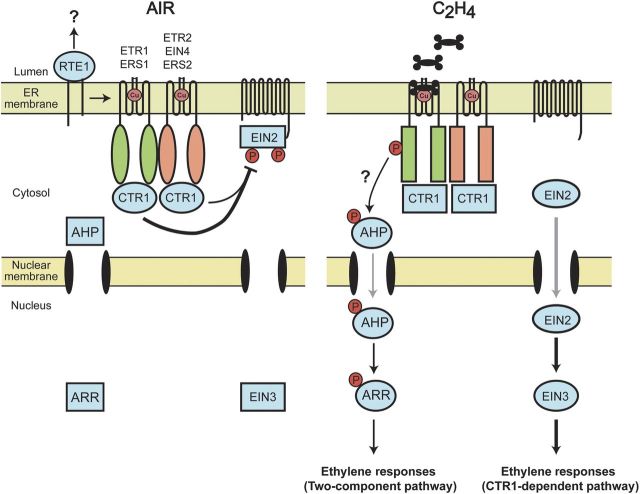Figure 4.
Model for ethylene signal transduction in Arabidopsis. The current model for signalling through the CTR1-dependent pathway is shown. In the absence of ethylene, the ethylene receptors activate CTR1, which phosphorylates and inhibits EIN2. In the presence of ethylene, the receptors inactivate CTR1, potentially through propagation of conformational changes in the receptor–CTR1 protein complex. EIN2 becomes dephosphorylated, which results in proteolytic cleavage and release of the C-terminal domain of EIN2. The C-terminal domain of EIN2 translocates to the nucleus, resulting in activation of EIN3 and the transcriptional response to ethylene. Two potential alternative pathways for ethylene signalling are also depicted (indicated by ‘?’). A two-component signalling pathway, initiated by the subfamily 1 receptors and involving phosphotransfer proteins (AHPs) and response regulators (ARRs), may mediate a subset of the ethylene responses. RTE1 may also facilitate ETR1 kinase kinase kinases signal output through a CTR1-independent pathway. Circles indicate the active forms of proteins and rectangles the inactive forms. The thickness of arrows indicates the relative contributions to the ethylene response. Grey arrows indicate translocation from the cytosol to the nucleus of the indicated proteins.

